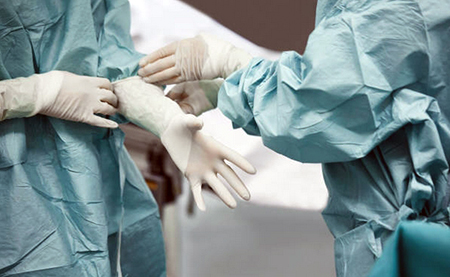Diagnosis and treatment of impotence (erectile dysfunction)


Impotence overview
When you first contact an andrologist or urologist, the most important step in the diagnosis of impotence (erectile dysfunction) is to collect complaints and determine a sexual history. The patient should tell in detail when this problem appeared, about previous and present sexual relations, previous infections, sexually transmitted infections, sexual preferences, spontaneous morning erections, the presence of difficulties in sexual arousal, ejaculation and orgasm. It is important to collect the entire medical history.
Short information about impotence
The next step is a physical examination with an assessment of the development of secondary sexual characteristics, including an external examination with a measurement of the waist circumference, blood pressure, examination of the external genital organs, digital rectal examination.
Laboratory research includes a biochemical blood test with determination of cholesterol, triglycerides, high and low-density lipoproteins, blood sugar, calcium, potassium, sodium; determination of the level of hormones of the sex hormones testosterone, luteinizing hormone, prolactin, estradiol, thyroid hormones and adrenal cortex.
Instrumental and special studies include ultrasound of the genital arteries, prostate gland, and an intracavernous test.
Psychosexual examination (carried out by a psychologist, psychotherapist or sexologist as prescribed by a urologist) is usually made for men younger than 40 who have signs of impotence.
After all the studies, the urologist determines the type of erectile dysfunction with the aim of selecting recommendations for lifestyle, nutrition, prescribing conservative treatment and consulting other specialists and, in extreme cases, deciding on surgical treatment.
When impotence is combined with premature ejaculation

Statistically, around 30% of men of all ages suffer from premature ejaculation. This basically means that they ejaculate earlier than they wished which can worsen their sexual life. The time that is considered normal for ejaculation is different for different countries – in Asia, in general, premature ejaculation is diagnosed if ejaculation occurs within the first 6 minutes of intercourse while in Europe, it is considered that on average ejaculation occurs in 13 minutes after the start of intercourse. However, in any country, there are no doubts that the disorder is present in a man who ejaculates 1-3 minutes after the start of intercourse or even before it.
What is the relation of premature ejaculation with impotence?
The thing is that these two conditions commonly go hand in hand. In more than 50% of men with premature ejaculation eventually develops erectile dysfunction, i.e. impotence. Sometimes it is caused by the hormonal imbalance or underlying organic diseases but it can also develop as a result of intimacy phobia due to premature ejaculation that causes fear of not pleasing a sexual partner. Fortunately, there are medications that can help in both of these conditions. The most effective and successful combination drug is Cialis with Dapoxetine. Cialis or its active ingredient Tadalafil is a type 5 phosphodiesterase inhibitor that relaxes smooth muscles of the penis which facilitates and promotes its filling in with the blood resulting in a stable and strong erection. It medical community it is known that a strong erection, or even a hyper erection, helps extending intercourse time so this medical substance already affects the time of ejaculation from one part. And Dapoxetine is an inhibitor of serotonin reuptake. It affects the ejaculation reflex, increasing the latent period and reducing the duration of the reflex impulse of motor neurons. It basically affects the mechanism of ejaculation occurrence extending the time by 30-50%. When these combined medicines in one pill, a man can solve both problems – with a 100% certainty develop and maintain a strong and lasting erection, and by around 70% extend the time of intercourse till ejaculation.
Methods of treatment of erectile dysfunction

1. Conservative (drug) methods are most popular in the treatment of this problem. The most popular drugs for the treatment of erectile dysfunction today are type 5 phosphodiesterase inhibitors (Cialis (Tadalafil), Viagra (Sildenafil), and others. This method of therapy has a significant advantage – it is the cheapest and the safest one because it doesn’t involve any invasive or painful procedures. Besides, drugs do not promote spontaneous erection but also a natural erection in arousal. However, the effect of a single dosage lasts for 4-36 hours (depending on the medication and the dosage). So it is not a cure but rather an additional method for men whose dysfunction is caused by an underlying condition whose main therapy is aimed at the main health condition, or the symptomatic treatment for older men whose impotence cannot be cured even by treating of underlying diseases.
2. Injections of vasoactive drugs (intracavernous injections) into the cavernous bodies of the penis increase blood flow and also cause an erection without erotic stimulation since taking the drugs of the previous group requires sexual stimulation. Intracavernous injections are performed by the patient on their own but a urologist needs to instruct the patient before prescribing this treatment. This method can be quite uncomfortable for men. Besides, with too frequent injections, the development of cicatricial changes in the tissues of the penis is possible, which further exacerbates impotence. The following contraindications to this method of treatment of erectile dysfunction are: inflammation of the cavernous bodies in history, Peyronie's disease, congenital malformations of the penis. The effectiveness of this method reaches 80%.
3. Vacuum constrictor method - used for inefficiency or in combination with drug therapy, as well as for the preference of this method of treatment by the patient. The technique of the method consists in creating a negative pressure in the cavernous bodies of the penis using a (vacuum pump), which contributes to the flow of blood to the penis and causes an erection, which is held by applying a special compressive ring at the base of the penis, limiting the outflow of blood. The frequency of complications with this method reaches 5%. Most often these are skin hemorrhages and pain in the penis.
4. A huge role is played by observation and treatment by a sexologist or psychotherapist in the presence of psychogenic erectile dysfunction.
5. Surgical treatment methods occupy about 5% of all types of impotence therapy. Treatment of erectile dysfunction is carried out in the absence of effectiveness from conservative treatment for 6 months, as well as in the presence of contraindications to it or for personal reasons of the patient. The most popular method of surgical treatment of organic erectile dysfunction is penile prosthesis.
Absolute indications for performing penile prosthesis:

- Severe damage to the vessels of the penis;
- Fibrosis and scarring of the cavernous bodies;
- Peyronie's disease in combination with erectile dysfunction;
- Consequences of radiation exposure after treatment of cancer;
- Congenital malformations of the penis;
- Micropenis (congenital small penis less than 7 cm (2 3⁄4 inches) when erect);
- The inability to correct psychogenic erectile dysfunction;
- Complications during operations on the pelvic organs;
- Other treatment is unacceptable for the patient’s personal reasons;
Contraindications for performing penile prosthesis surgery:
- Advanced forms of balanoposthitis;
- Urinary fistulas;
- Chronic inflammatory diseases;
- Severe intravesical obstruction;
- Abnormalities of the urethra;
- Colostomy.
To date, there are several types of penile prostheses: one-component, two-component, and three-component.
Most often, a one-component prosthesis is installed. The advantage of this type of prosthesis is its lower cost in comparison with two- and three-component prostheses, ease of use by the patient and his partner, the operation is performed without special technical difficulties, it is the operation of choice in patients with damaged hands. There are three different dimensions for prostheses. The risk of a mechanical prosthesis failure is minimized. In most cases, a patient has to stay in the hospital for just one day. Penile prosthesis manufacturers use unique innovative materials, give a lifetime warranty on their products, and provide patients with guarantees of stability and long-term success. However, there are some disadvantages of this method: there is no physiological imitation of the flaccid penis, erosion of the tissues of the penis is possible. This method is usually used in older men or in men with severe injuries or diseases in which other impotence treatment methods are ineffective.
In the presence of vascular lesions (arteriogenic or venogenic impotence), vascular surgery is performed. They are usually performed in patients under the age of 35 years. Before undergoing this surgery, additional consultation by the microsurgeon is required.
Post by: Samuel Wrangler, M.D., Montgomery, Alabama
(Updated at Apr 13 / 2024)
Cialis with Dapoxetine articles:
Some of the trademarks used in this Web Site appear for identification purposes only.
All orders are reviewed by a licensed physician and pharmacist before being dispensed and shipped.
The statements contained herein are not intended to diagnose, treat, cure or prevent disease. The statements are for informational purposes only and is it not meant to replace the services or recommendations of a physician or qualified health care practitioner. If you have questions about the drugs you are taking, check with your doctor, nurse, or pharmacist.